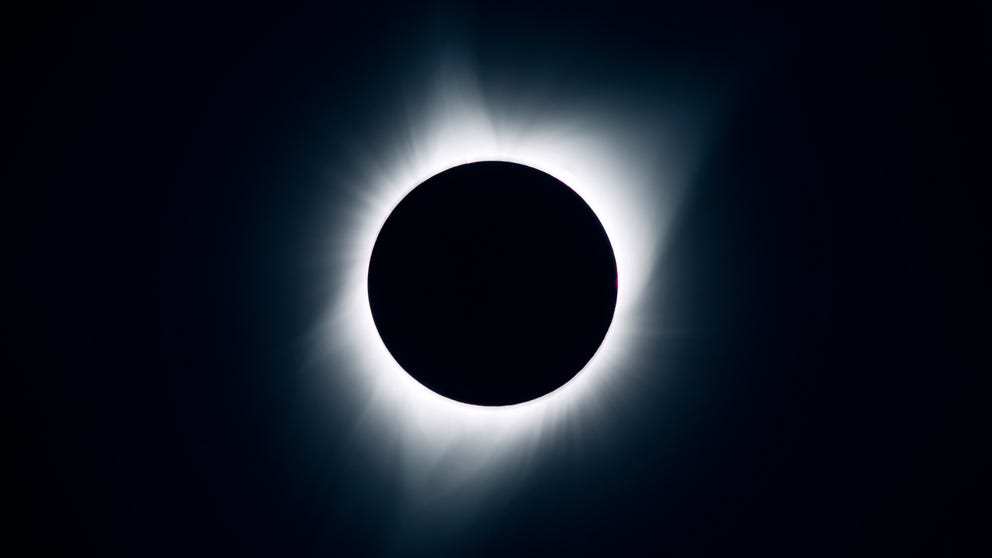Solar eclipse, Orionid meteor shower make October skygazing forecast a standout
The annular solar eclipse on Oct. 14 comes ahead of the total solar eclipse in 2024. October's full Hunter's Moon rises with Jupiter at the end of the month, making a celestial pairing easy to spot.
Total eclipse countdown: The Great North American Solar Eclipse is officially less than 1 year away
In 2023 and 2024, Americans will have the rare opportunity to witness two spectacular celestial events: an annular solar eclipse and a total solar eclipse.
October has a handful of celestial treats in store for skygazers from the annular solar eclipse to the ever-dependable Orionid meteor shower.
Throughout the month, the Moon will make an excellent partner for several planets appearing bright in the night sky.
Here's a look at the October skygazing forecast.
October 14: ‘Ring of fire’ during the annular solar eclipse
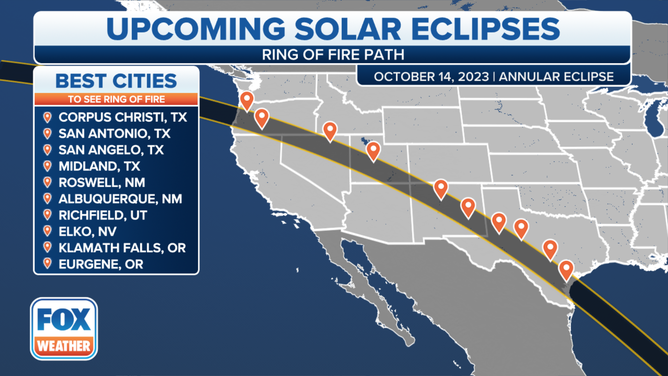
The path of the annular eclipse will cover the Southwest and Pacific Northwest.
(FOX Weather)
On Saturday, Oct. 14, an annular solar eclipse will be visible from the Northwest to the Gulf Coast.
An annular eclipse is not a total eclipse, as the Moon doesn’t entirely block the Sun’s light – only 90%. An annular eclipse happens when the Moon is at the farthest point in its orbit of Earth. During the maximum eclipse, known as annularity, the light from the Sun peaks out around the Moon, creating a "ring of fire."
HOW TO SAFELY WATCH A SOLAR ECLIPSE
You will need to wear special eclipse glasses during the entirety of the annular eclipse. Taking the glasses off at any point, even during the maximum eclipse, is unsafe.
Nine states will be along the path of the maximum eclipse, which stretches from Oregon to Texas. The eclipse in the U.S. begins in Oregon just after 8 a.m. PDT and ends in southeastern Texas at 1:33 p.m. CDT.
The annular eclipse comes ahead of the rare total solar eclipse next year. In April 2024, a total solar eclipse dubbed the Great American Eclipse will span the U.S. from Texas to Maine.
October 21-22: Orionid meteor shower peak
Originating from the Comet IP/Halley, the Orionid meteor shower peaks in mid-October across the Northern Hemisphere as Earth passes through the comet dust.
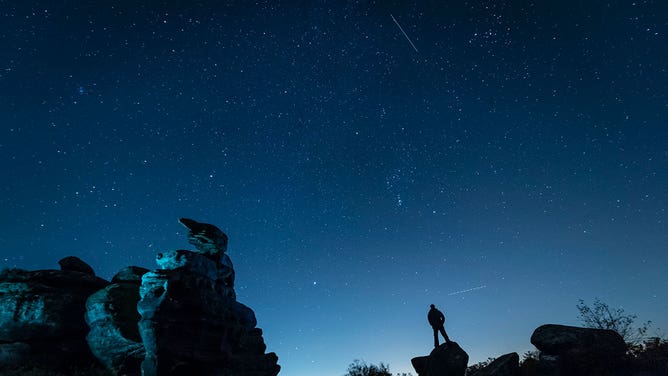
A plane and a Satellite pass by as a man stargazes at Brimham Rocks in Yorkshire as the Orionid meteor shower reaches its peak.
(Danny Lawson/PA Images via Getty Images)
The Orionids should be visible across the Northern Hemisphere after midnight, starting halfway through the month. This meteor shower is considered one of the year's best, as the Orionids are known for their speed at 41 miles per second and brightness, according to NASA.
Under a moonless sky, about 23 meteors per hour could be spotted.
October 28: Partial lunar eclipse
A partial lunar eclipse happens at the end of October, but for those in North America, you'll have to look for visuals of this online. Because of the timing, the partial lunar eclipse will happen over Asia, Africa and Europe.
UTAH'S CANYONLANDS NATIONAL PARK PREPARES FOR OCTOBER SOLAR ECLIPSE CROWDS
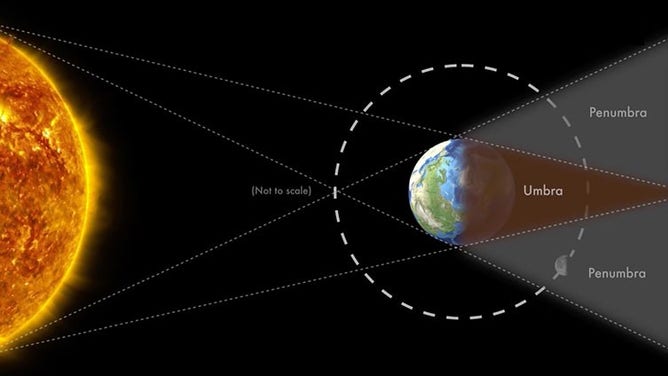
Example of a lunar eclipse.
(NASA)
As the Moon partially passes through Earth's shadow on Oct. 28, a portion of the Moon will disappear for those in viewing range.
October 28: Full Hunter's Moon
October's full Moon is known as the Hunter's Moon. On Oct. 28, the peak illumination happens during the afternoon, meaning the best time to view the full Hunter's Moon will be on Saturday evening in North America.
The official peak happens at 4:24 p.m. EDT on Saturday, but the Moon will be bright through the entire weekend.
According to the Farmers' Almanac, the name of October's full Moon comes from the time of the year when Native Americans began stocking up on food for the winter months.
Planetary pairings throughout October
According to NASA, some visually impressive planet pairings with the Moon are worth looking up at in October.
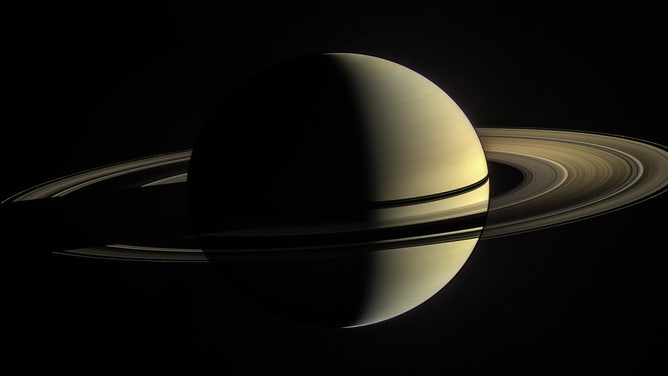
This was Cassini’s view from orbit around Saturn on Jan. 2, 2010. In this image, the rings on the night side of the planet have been brightened significantly to more clearly reveal their features.
(NASA/JPL-Caltech/Space Science Institute / NASA)
On Oct. 10, Venus will be in a tango with a crescent Moon with the heart of Leo the Lion in between them, according to NASA's stargazing forecast. Then, on Oct. 23, a 70% illuminated Moon will be hanging just beneath the planet Saturn. NASA said the proximity of Saturn and the Moon will provide easy viewing.
When the Oct. 28 Hunter's Moon rises, Jupiter will rise along with it. The Moon and Jupiter will appear as the brightest two objects in the night sky, wrapping up a month of beautiful Moon-planet pairings.
